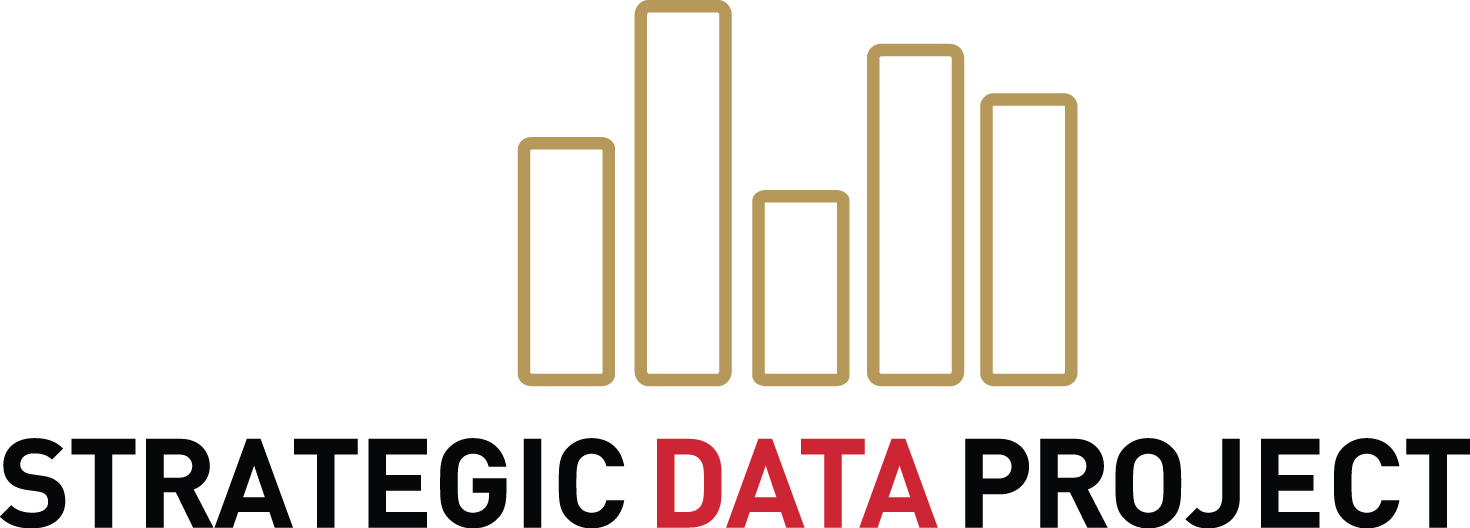 SDP Fellow Sue Mukherjee is merging student data with employment data to shed light on how post-secondary institutions can best respond to students and workforce needs.
SDP Fellow Sue Mukherjee is merging student data with employment data to shed light on how post-secondary institutions can best respond to students and workforce needs.
Is higher education preparing students for work? The academy thinks so. Employers and the public, not so much.
Arguing for the value proposition of higher education hinges on a big question: How does education translate to career outcomes? To answer this question, institutions need information that can vividly illustrate the link between the skills and knowledge that alumni are (or are not) bringing to the workforce post-graduation. This information can then serve as a common language for learners, employers, and educators.
While colleges and universities have long tracked a variety of outcomes using several different metrics—including access, completion rates, and costs—most higher education institutions do not have a seamless information-tracking system for graduates’ workforce outcomes. What that means is that there’s no easy way for parents, learners, and employers to clearly see how a particular institution or academic program might prepare its students for life after graduation in the local labor market.
The information that does exist on how graduates fare in the workforce is often hidden in the corners of a bureaucratic vault. The kind of meaningful data parents and students want most might require the merging of institutional student data with state administrative wage records. Getting institutional and governmental organizations on the same page has proven an extremely difficult task under even the best circumstances. And, it does not shed light on career outcomes of graduates as measured by occupations and skills (hard and soft).
Letting Data Lead the Way
In Pennsylvania, SDP Fellow Sue Mukherjee at Shippensburg University did what seemed near impossible: She outlined a replicable process to link student records and workforce profiles to produce outcomes data in a way that provides learners and employers with information that can help them make better decisions about education and about work. Mukherjee’s project sought to “democratize access to outcomes data traditionally produced with policy-makers in mind.” She noted, “This process helps push boundaries on how educators and employers can solve regional problems by using a common framework of language for workforce outcomes. A framework around careers, jobs, and skills.”
Here’s how she did it: Alumni profiles and student records were merged to provide timely and regionally-specific information about the career trajectory of learners at the program level. This process produced valuable information on what majors may be best suited for an individual student at the institution. For instance, a student majoring in computer science (CS) could easily see how many CS alumni from their institution went on to get programming jobs locally, how much those jobs paid, and how quickly those jobs led to other opportunities.
The research was based on the premise that aggregate wages (as produced by SLDS) is but one facet of the outcomes discussion. The value of higher education is unique by programs, students, geographies, and institutions. Understanding region-specific career trajectories of graduates is essential to comment on the education-workforce connection.
Data illustrating the transformation of students into workers and earners came in interesting forms. Rather than using IPEDS or SLDS outcomes data—both good data sources necessary to construct the full story for higher education—Mukherjee used real-time big data in the form of alumni profiles and job postings. Graduates’ public profiles scraped from sites like LinkedIn, GitHub, and Monster Career Builder as well as various kinds of data pulled from employer job postings helped paint a picture about the needs of the workforce and the skills of alumni addressing those needs.
This data, when linked back to the university’s student information system, provided additional nuance to the picture of workforce outcomes for institutions highlighting the education-occupation outcome at the program level for Shippensburg.
On the institutional side, the linked data shed light on curriculum and programming outcomes for alumni. For example, a history department can see that a significant number of their graduates go on to work in government jobs. Such information can be helpful in advising students, recruiting majors, and partnering with organizations.
Sue is hoping that data can provide a better forecast for a degree’s return on investment (ROI). Parents who are nervous about picking up the cost of tuition might be relieved to see the range of opportunities for their biology or English major.
However, Mukherjee clarifies that ROI is not the only metric in play. A history major may not end up with a high-paying job but will still gain valuable skills they can apply in some post-graduation context. The skill-based data fleshing out that context provides another guidepost for decision-making.
What the Data Can Show Us
Mukherjee, who considers herself “a workforce development junkie,” used her passion for data and technology to bring this project to life. Utilizing a database called Alumni Insight, Mukherjee provided employment outcome data gathered from more than 100 million professional profiles and resumes in the United States. Three million of those profiles were of Pennsylvania residents. To manage the scope of this project, she analyzed data for Shippensburg University of Pennsylvania. With that information, Mukherjee was able to show specific and usable data about outcomes and education-programming outcome. Specifically, she recognized three important data points that were previously unavailable:
Education-Occupation Crosswalk: An institution-specific crosswalk is a key tool for viewing the real time connections of education programs with the labor market, which is especially important for liberal arts and humanities. The federally-maintained taxonomy from degrees to jobs (CIP to SOC) works reasonably well for academic programs that have a direct connection to the workforce (such as STEM programs). General programs have historically suffered creating national dialogue on limited job opportunities for Bachelor’s degrees in Liberal Arts, General Studies. Empowering the higher education enterprise (especially small colleges and universities) with the ability to develop a taxonomy that is true to their landscape is invaluable.
Career Trajectories: This linked database made identifying career trajectories of alumni possible, helping faculty and staff view the diverse career paths they are creating, specific to their institutions. Additionally, they can course correct to strengthen and better align programs to the labor market.
Program Outcomes: Using a technique commonly known as Location Quotient, Mukherjee calculated the competitive wage advantage of programs. At the granular program level, faculty can make direct assessments about student success in the workforce as measured by occupational-wages. The information can help department chairs and faculty advocate for program development. The data can serve as a useful indicator for assessment.
Lessons Learned
As a result of this work, Shippensburg University of Pennsylvania has made significant progress in using data to produce accessible outcome data for their graduates. Data that uses a common framework of language around programs, careers, skills and occupations for learners, educators, and regional employers.
Mukherjee points out that data products must be “human centered” — that is, the design has to transcend the accountability dialogue at the policy level to also create meaning at the front-line. It’s about providing as much information as possible—in a digestible format—to empower students and help institutions provide the best possible learning environment. Data that can help educators and employers speak the same language around talent development.
Work is the top motivation for students entering the higher education enterprise, and Mukherjee’s work was inspired by a 2018 conversation she had with a graduate about how he perceived value of his education and aspiring career trajectory:
‘We are lower middle class students. The value I'm getting is the ability to make connections and prepare for a career. I want to go to graduate school to get my PhD in Political Science. Also, I would like to run for public office in order to help the people who have been abandoned by our current government.’
_____
Sue’s work plays into a larger initiative SDP is launching in the coming year: the SDP Career and Technical Education (CTE) Fellowship, Sponsored by the ECMC Foundation. This program for postsecondary institutions with career and technical training programs will help CTE Fellows use data to help postsecondary institutions uncover insights to help CTE students to thrive in college, in the workforce, and in life.
